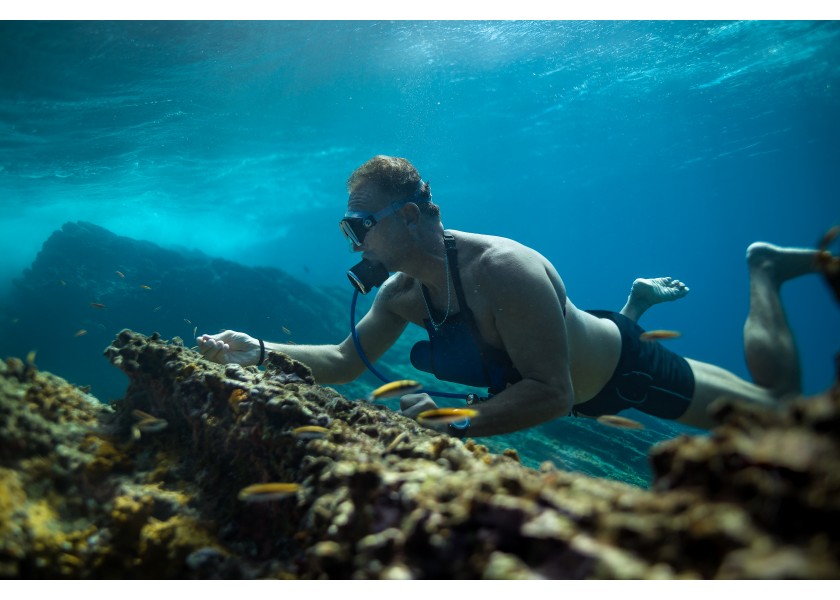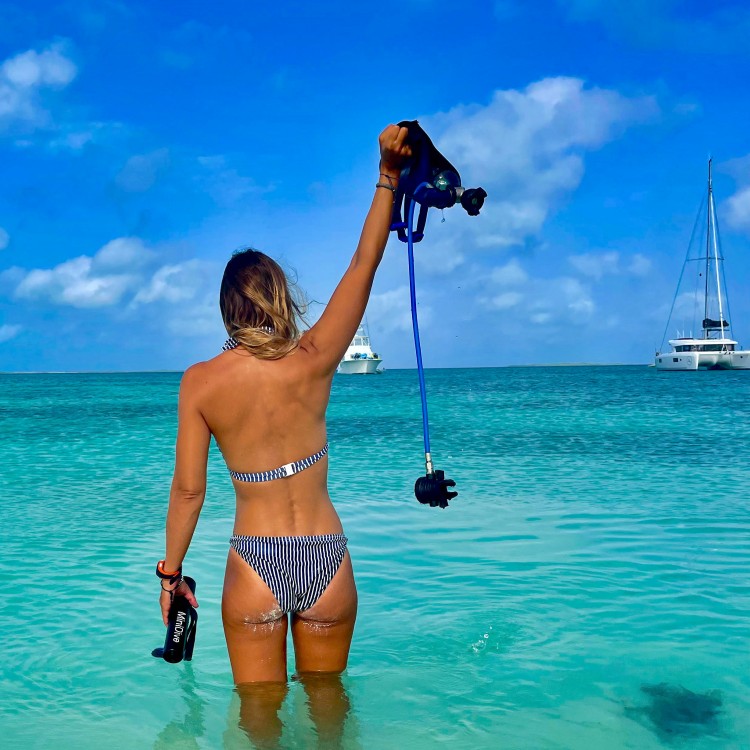
Mini scuba tank, what are the dangers ?
Mini scuba tank, what are the dangers ?
In this article, we will discuss the subject of the dangerousness of scuba diving. First of all, it is important to specify that diving is not a dangerous sport in the strict sense of the word, but that like all sports, diving involves risks. But whether it is with a classic scuba tank or with a small one such as the Karbones tank, exploring the sea bed by yourself or with a diving club may involve some risks.
The purpose of this article will be to detail the good habits to take in order to limit the risks.
There are five different types of risks: depth (pressure on the human body), environment (the marine environment), equipment, physical condition and training (diver behavior). The accident rate in diving is around 2 per 1000 divers and the fatal accident rate is even lower. Nevertheless, it should be noted that although the risk is low, the consequences of accidents can be serious. In order to manage these risks and prevent accidents, it is necessary to identify them and ensure that adequate safety procedures are followed.
Compensate your ears well
Barotrauma to the sinuses and ears is responsible for 90% of all diving accidents. They are caused by increased pressure in the body's air cavities. This accident occurs when the diver has not been able to equalize the pressure of the air trapped in the sinuses with the ambient pressure of the water, by introducing air through the Eustachian tube to balance the increase in pressure.
In order to avoid barotrauma, certain instructions must be followed. First of all, you must absolutely avoid diving when you have a cold.
You must also know how to balance your ears during the descent. To do this, you must practice and learn several techniques. The five most commonly used techniques are the following:
The Vasalva technique: You must pinch your nostrils and blow gently through your nose. The air trapped in the sinuses by this technique is replaced by air from the lungs (at the same pressure as water), and thus balances the eardrum membrane.
Swallowing (Toynbee's maneuver): You have to take a breath and then swallow your saliva by pinching your nose. This is one of the gentlest techniques for the eardrums. By swallowing, the Eustachian tubes open and allow for easier balancing.
Yawn: Simulate or induce a yawn. This technique is also very gentle on the eardrums and works every time, if the yawn is "frank".
Move the jaw: Take a breath, move the lower jaw forward, from left to right. If that does not work, it is necessary to use the technique of Valsalva, to blow very gently by the nose, by moving the jaw.
Blow your nose into the mask and repeat one of the equalization techniques: Sometimes, it is necessary to evacuate the mucous membranes trapped in the eustachian tubes, in order to be able to equalize the ears. To do this, simply blow your nose, one nostril after the other, plugging one nostril with a finger and blowing through the other.
It is advisable to equalize your ears quite frequently during the descent. Most divers equalize their ears every meter during the descent.
Pulmonary overpressure
Another possible type of diving accident is pulmonary overpressure. Pulmonary overpressure is caused by breathing air from the scuba tank at depth. The air provided by the tank is at ambient pressure, so as the diver ascends, the ambient pressure drops and the volume of air in the lungs increases. If the air in the lungs cannot escape, the lung tissue can rupture and lead to a pulmonary overpressure accident. These accidents can occur during an uncontrolled, overly rapid ascent or when the diver holds his or her breath. These accidents are often due to panic or a lack of training of divers on the safety procedures to adopt in case of air failure. In fact, it is important to remember that in the event of an emergency ascent, it is necessary to look up to open the airway and allow air to escape from the lungs through the mouth at a steady and measured rate. In addition, it is important to maintain a continuous and smooth breathing pattern, never holding your breath while diving.
Report to the surface
In order to limit the risks associated with the marine environment, you must first of all identify yourself at the surface. If you are several meters underwater, you must signal at the surface to avoid a possible collision with a boat, for example. If you are diving with a diving club, you will probably be signaled by the boat carrying you. But if you are diving with mini aluminum tanks refilled with a hand pump, you will need a buoy attached to your body to create a marker of your position on the surface. If your tank is inflated to 200 bars, you will have enough autonomy to stay underwater for several minutes. But even if you stay only 30 seconds, you need to signal your position on the surface. That's why MiniDive offers for example a buoy for this purpose on its website :
Fish and marine life
Always with the aim of reducing as much as possible the dangers linked to the marine environment, you must watch a certain number of factors before and during your dive. Even with a mini scuba tank, it is important to analyze the conditions of the dive, such as the weather (wind, waves, etc.), the launch (from the beach or a boat), the currents, the visibility underwater and the water temperature. You have to adapt your dive according to all these parameters and always follow the safety instructions given by the manufacturer.
It is also important to be aware of the marine life that can be potentially dangerous. One of the main objectives of scuba diving is the possibility to explore the sea bed and discover the marine fauna and flora. However, you must be careful when approaching certain species, as some fish can be more or less dangerous or aggressive if you get too close. The same goes for corals, which can be sharp and therefore dangerous if you put your foot on them for example.
If you want to learn more about marine life and know which species you can meet depending on the depth, you can visit this website:
This will allow you to learn more about your environment before your dive and thus appreciate even more the underwater life.
In order to learn the right steps to follow and the good safety instructions, it is advised to go to a diving center to learn from more experienced divers.
There are several levels that allow you to start diving (level 1), to improve and go further (level 2 and 3) and even to lead a group if you wish (level 4). The choice of the level to pass will depend on the objectives you wish to reach.
Even if you choose to dive autonomously with a mini tank, it is very important to follow all the instructions given by the manufacturer. It may also be advisable to enlist the help of experienced divers to help you learn more about diving and to ensure that you have the right attitude for your underwater explorations.


All comments